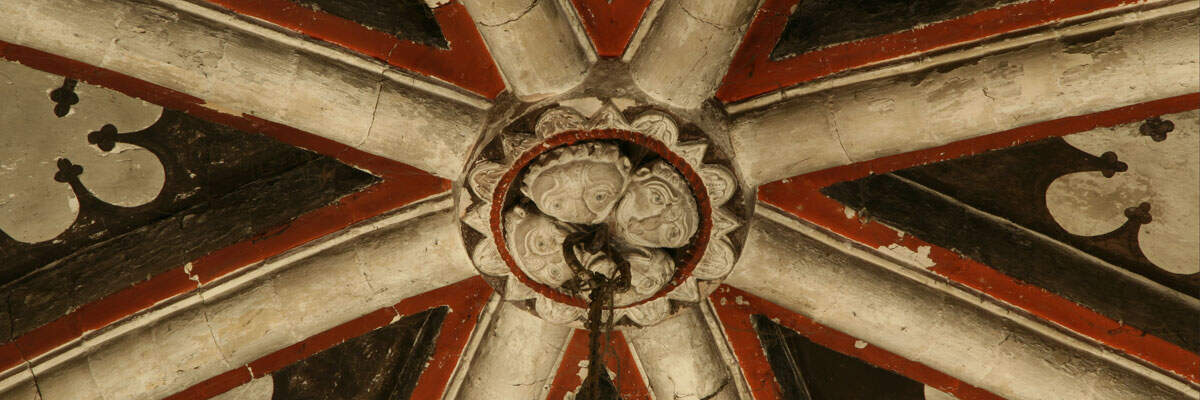Ryther is a village almost equidistant between Tadcaster and Selby in North Yorkshire. The church is in a quiet and open situation not far from the river Wharfe. It has a simple nave and chancel, perhaps of pre-Conquest origin, together with S aisle, S porch and a vestry made in the W end of the aisle. Mostly limestone, but quite a lot of gritstone. The wide S aisle was added about 1300 according to Pevsner; this has three bays, and in this are the best of the four or five medieval altar stones.
A leaflet in the church mentions a rebuilding of the chancel in 1843, and restorations in 1861 and 1898. For the restoration in 1898, by Hodgson Fowler, the papers (Borthwick Fac. 1897/16) do not include any drawings before work commenced. At this restoration it was proposed that the roofs were taken off and the gables taken down at least as far as solid old work, and rebuilt; a brick tower was to be taken away, the W wall of the nave refaced perhaps as a consequence, and the S porch renewed. Instructions in the specification say 'All old carved and moulded work that may be found or is in the part to be pulled down to be carefuly preserved and built into the porch walls as directed to show it'.
There is definitely Romanesque interest in the dozen or so reset pieces which are outside on the walls and buttresses of the S aisle, the W wall of the aisle, and inside the porch. Almost all are listed below as Features are in the exterior walls of the south aisle. Pevsner notes two reset window-heads, late Saxon or early Norman, in the N wall of the nave, and there is another twelfth-century slab on that wall too. The doorway to the chancel, at least in part of the late 12th century, is restored. Inside the church, the chancel arch is of uncertain date, and the font too.



